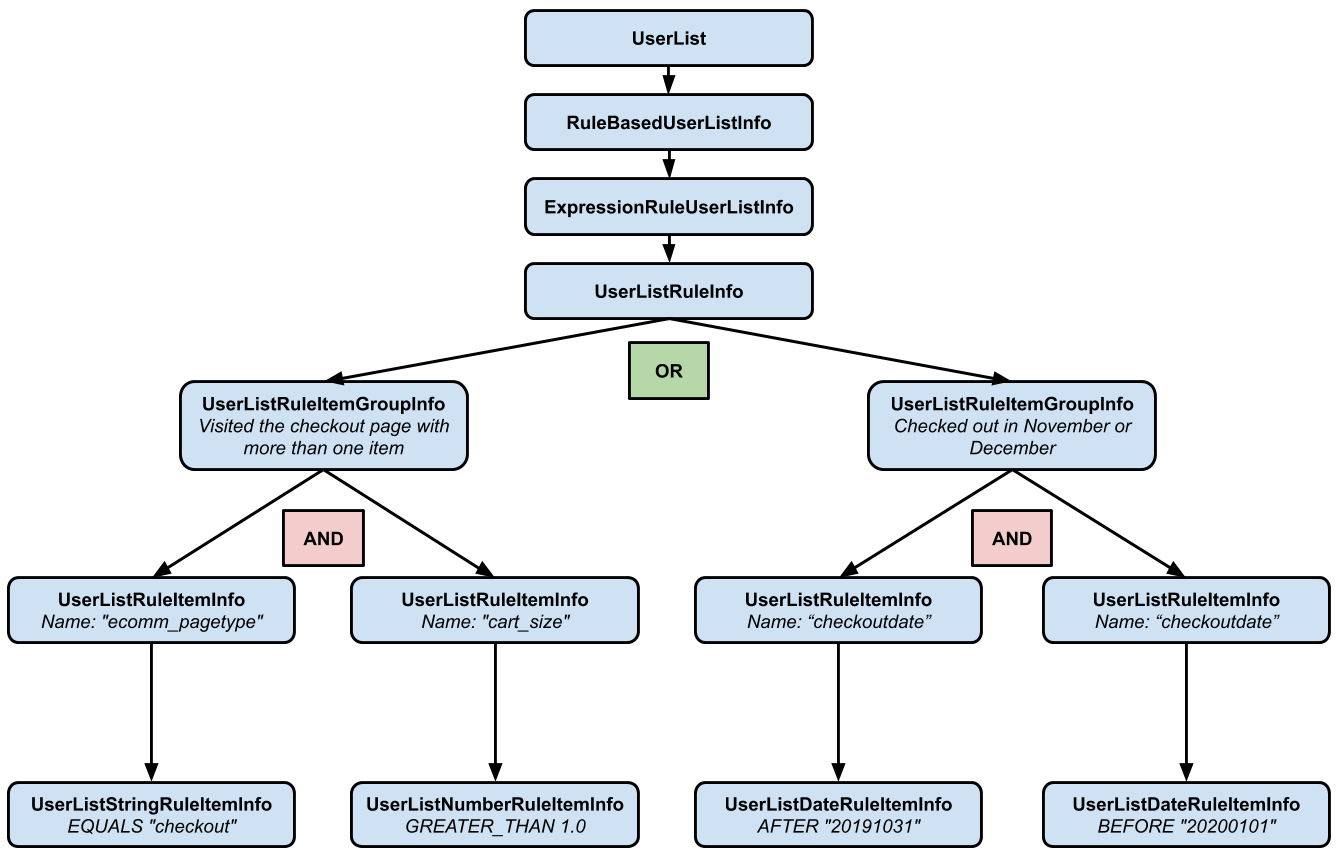لنفترض أنّ لديك موقعًا إلكترونيًا أعددت فيه عدّة مَعلمات مخصّصة لعلامة تجديد النشاط التسويقي من أجل تسجيل السمات التالية للمستخدمين:
event: فئة الصفحة على موقعك الإلكتروني، مثل صفحة الدفع أو سلة التسوق أو غير ذلكcartsize: عدد السلع في سلّة تسوّق أحد المستخدِمين-
checkoutdate: التاريخ الذي سجّل فيه المستخدم الخروج. لا تضبط هذه المَعلمة إلا عندما يُكمل المستخدم عملية شراء.
تريد عرض المزيد من مرّات الظهور للمستخدمين الذين أضافوا سلعًا متعدّدة إلى سلات التسوّق وبدأوا عملية الدفع. تريد أيضًا العثور على المستخدمين الذين أجروا عملية شراء خلال شهرَي تشرين الثاني (نوفمبر) وكانون الأول (ديسمبر) لأنّك تخطّط لإجراء تخفيضات كبيرة على موقعك الإلكتروني خلال هذين الشهرين.
يمكنك وصف هذه المجموعة من المستخدمين باستخدام إحدى القاعدتَين التاليتَين:
- المستخدمون الذين زاروا صفحة الدفع وكان لديهم أكثر من منتج واحد في سلة التسوق
- المستخدمون الذين أجروا عملية دفع خلال شهرَي نوفمبر أو ديسمبر
إذا كان المستخدم ينتمي إلى الفئة 1 أو الفئة 2، عليك زيادة عروض الأسعار في مجموعات إعلانية أو حملات معيّنة بنسبة %25.
العناصر
اطّلِع على بنية قائمة المستخدمين المستندة إلى قواعد. يتم تمثيل القائمة المستندة إلى قواعد في Google Ads API على النحو التالي: rule_based_user_list.
يوضّح المخطّط التالي كيف سيبدو rule_based_user_list لحالة الاستخدام هذه عند الانتهاء.


